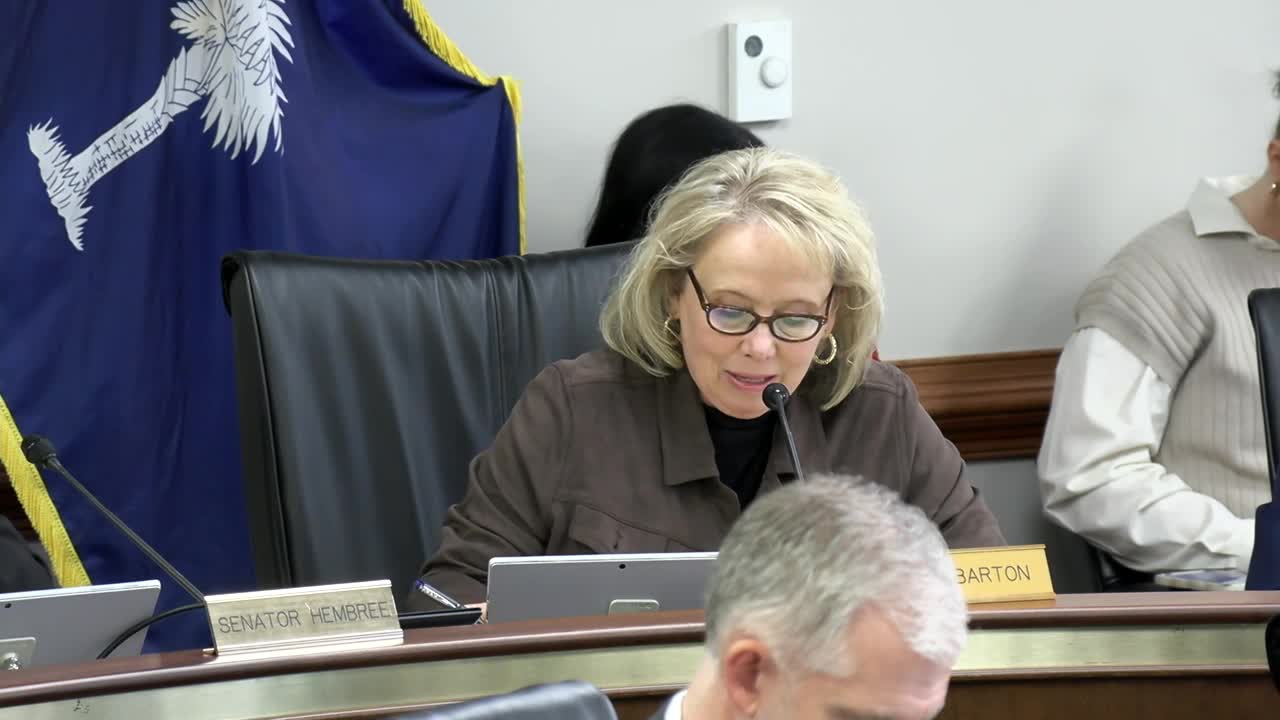Committee debates expanding firearm expulsion rules and adding threat‑by‑communication offenses; committee carries bill over for redrafting
March 26, 2025 | Education, Standing, Senate, Committees, Legislative, South Carolina
This article was created by AI summarizing key points discussed. AI makes mistakes, so for full details and context, please refer to the video of the full meeting. Please report any errors so we can fix them. Report an error »

Senate Bill 416, a measure that clarifies school discipline rules for students who bring firearms to campus and seeks to create a distinct disciplinary category for written or electronic threats of bodily harm, was carried over by the Senate Education Committee for additional drafting after an extended discussion.
Donna Barton, research director, told the committee the bill would differentiate general school discipline procedures from the distinct process required for firearm‑related expulsions. The bill would require a one‑year expulsion for bringing a firearm to school measured from the date of the incident; the bill clarifies that the district board of trustees must conduct the hearing and that a superintendent may not unilaterally reduce the board’s action, though the board itself could modify the one‑year requirement on a case‑by‑case basis.
The subcommittee and witnesses proposed a broader addition to the code that would create a separate category for a student who “knowingly and willfully” conveys a threat to commit bodily harm by means of written material or electronic communication; the proposed language defines elements and gives districts authority to impose discipline that could include expulsion for the current school year unless the board decides otherwise. Committee members pressed staff on whether the proposal should include verbal threats and how to distinguish malicious hoaxes from protected speech or juvenile mistakes.
Members also debated whether the firearm offense should include a knowing‑mens rea element (knowledge) or remain strict liability regardless of intent. Senators discussed real cases in which a weapon in a trunk or an inadvertent transport could result in the same statutory consequence as a deliberate threat; members split on how much discretion to retain for boards and superintendents. One senator noted that the proposal would treat threats communicated by the internet or phone the same as a firearm on campus for disciplinary purposes; others urged narrowing or clarifying the definitions to avoid swift, disproportionate punishment for hoaxes or ambiguous comments.
Because the bill involves competing policy aims—clear deterrent language for threats and firearms versus procedural fairness and appropriate mens rea—the committee concluded the measure required more time for staff to draft language that balances those concerns. The committee voted to carry the bill over for further work and deferred further action to a later meeting.
Donna Barton, research director, told the committee the bill would differentiate general school discipline procedures from the distinct process required for firearm‑related expulsions. The bill would require a one‑year expulsion for bringing a firearm to school measured from the date of the incident; the bill clarifies that the district board of trustees must conduct the hearing and that a superintendent may not unilaterally reduce the board’s action, though the board itself could modify the one‑year requirement on a case‑by‑case basis.
The subcommittee and witnesses proposed a broader addition to the code that would create a separate category for a student who “knowingly and willfully” conveys a threat to commit bodily harm by means of written material or electronic communication; the proposed language defines elements and gives districts authority to impose discipline that could include expulsion for the current school year unless the board decides otherwise. Committee members pressed staff on whether the proposal should include verbal threats and how to distinguish malicious hoaxes from protected speech or juvenile mistakes.
Members also debated whether the firearm offense should include a knowing‑mens rea element (knowledge) or remain strict liability regardless of intent. Senators discussed real cases in which a weapon in a trunk or an inadvertent transport could result in the same statutory consequence as a deliberate threat; members split on how much discretion to retain for boards and superintendents. One senator noted that the proposal would treat threats communicated by the internet or phone the same as a firearm on campus for disciplinary purposes; others urged narrowing or clarifying the definitions to avoid swift, disproportionate punishment for hoaxes or ambiguous comments.
Because the bill involves competing policy aims—clear deterrent language for threats and firearms versus procedural fairness and appropriate mens rea—the committee concluded the measure required more time for staff to draft language that balances those concerns. The committee voted to carry the bill over for further work and deferred further action to a later meeting.
View full meeting
This article is based on a recent meeting—watch the full video and explore the complete transcript for deeper insights into the discussion.
View full meeting